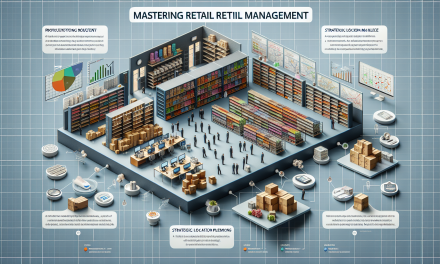Table of Contents
- Introduction
- Why Effective Inventory Management Matters
- Key Principles of Inventory Management
- Leveraging Technology for Inventory Management
- Strategies for Optimizing Inventory Levels
- Advancing Your Skills with Certification
- FAQs
- Conclusion
Introduction
Managing inventory effectively can make or break a business. In today’s fast-paced environment, efficient inventory management not only saves costs but also enhances customer satisfaction. As businesses strive to meet customer demands while minimizing excess stock, understanding inventory management becomes paramount. This blog post takes a deep dive into the essentials of inventory management, exploring its significance, key principles, and modern strategies.
Why Effective Inventory Management Matters
Effective inventory management plays a vital role in maintaining the balance between supply and demand. When done correctly, it ensures that businesses can fulfill customer orders promptly while avoiding the pitfalls of overstocking. This section discusses several reasons highlighting the importance of mastering inventory management.
1. Cost Control
By maintaining optimal inventory levels, companies can effectively control costs associated with storage, spoilage, and obsolescence.
2. Improved Cash Flow
When inventory is managed well, cash flow improves significantly. Less money tied up in unsold goods allows businesses to invest elsewhere.
3. Increased Customer Satisfaction
Stockouts can lead to missed sales opportunities and dissatisfied customers. By staying on top of inventory, businesses can ensure product availability, thus enhancing customer trust and loyalty.
Key Principles of Inventory Management
Grasping the fundamental principles of inventory management will empower businesses to streamline their operations. Here are some essential principles every business should consider:
1. Know Your Inventory
Understanding what products are in stock is crucial. Implementing an inventory tracking system can help keep tabs on stock levels with ease.
2. Categorize Inventory
Not all inventory is created equal. Classifying products based on their importance can assist businesses in prioritizing management efforts. For instance, the Category Management in Procurement provides valuable insights into effective categorization.
3. Monitor Trends and Adjust Orders
Keeping an eye on sales trends allows businesses to adjust orders accordingly. This proactive approach helps in forecasting demand more accurately.
Leveraging Technology for Inventory Management
Incorporating technology in inventory management enhances efficiency and accuracy. Here are some ways businesses can benefit:
1. Inventory Management Software
Utilizing software specifically designed for inventory management can streamline processes, reducing human error significantly.
2. Automation
Automating inventory tasks such as reordering can save time and ensure that stock levels remain optimal.
3. Data Analytics
Using analytics tools aids in understanding purchasing patterns, making inventory prediction more reliable.
Strategies for Optimizing Inventory Levels
Implementing effective strategies will help in fine-tuning inventory management processes. Below are several proven methods:
1. Just-In-Time Inventory
This strategy minimizes stock holding, ensuring that products arrive just as they are needed for production.
2. ABC Analysis
This inventory categorization technique separates items into three categories (A, B, C) based on their importance. Understanding which items require more focus enhances resource allocation.
3. Safety Stock
Maintaining a buffer stock protects against sudden demand spikes or supply chain disruptions.
Advancing Your Skills with Certification
Enhancing your inventory management skills will set you apart in today’s competitive landscape. Explore options like the Inventory Management Certification & Warehouse Training Course. This certification offers insights into advanced inventory management techniques, which are crucial for any professional looking to improve their skillset.
Related Resources
- Maximize Efficiency with Strategic Purchasing Management
- Mastering E-Procurement Implementation and Management
- Mastering Supply Operations: A Guide to Strategic Supplies and Efficient Export Chains
- Harnessing Advanced Procurement Strategies for Effective Warehousing and Logistics Management
FAQs
What skills are essential for effective inventory management?
Key skills include attention to detail, analytical thinking, forecasting abilities, and organizational skills. Familiarity with inventory management software is also crucial.
How can technology improve inventory accuracy?
Technology reduces human error through automated tracking, real-time data analytics, and streamlined processes, allowing for more accurate inventory records.
What is the significance of safety stock?
Safety stock acts as a protective buffer, enabling businesses to manage unexpected spikes in demand or unforeseen supply chain disruptions.
Conclusion
Understanding and mastering inventory management is essential for any business aiming to thrive in today’s competitive landscape. By implementing effective strategies and utilizing modern technology, companies can optimize their inventory levels, enhance customer satisfaction, and ultimately drive success. Remember that ongoing learning and adapting to industry changes will keep your inventory management practices sharp and effective.





